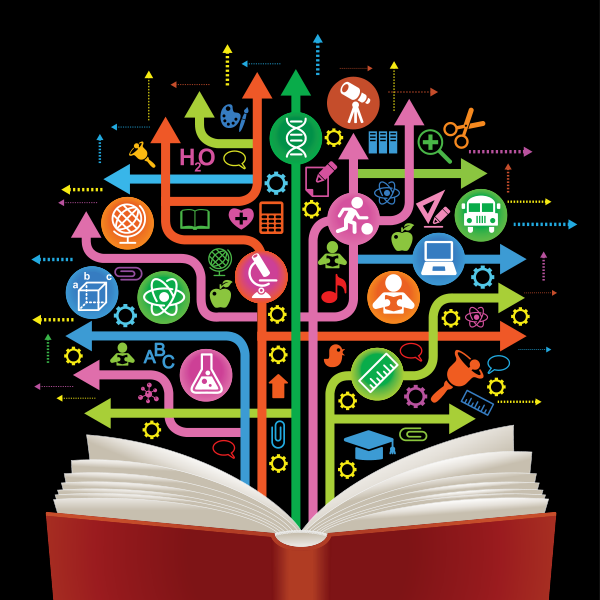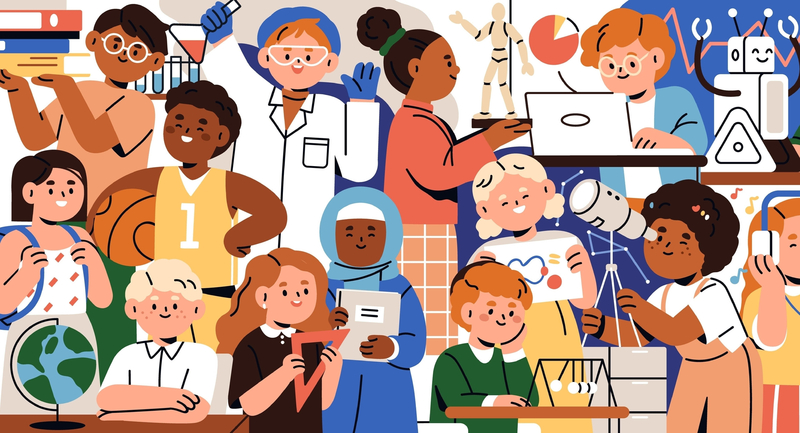For most of my life as a student, I understood school to be a place where students tried to remember a lot of stuff about a lot of things. The game was to remember enough stuff to impress the teacher when it came time for a test. I can't recall a clear sense that the stuff was for anything significant except good grades, standardized test scores, and college admissions (where the cycle more or less began again).
I had one encounter with learning that felt remarkably different. During my sophomore year of college, my U.S. history professor assigned each student a site or element in the community to study. We were to go there at least three times a month and to do our best to understand both the entity and how it related to what we were learning in class.
I was assigned to the local Unitarian Universalist Church. A product of the Deep South, I had no idea what it was and didn't understand the purpose of going there. In the meantime, our professor rooted our study of history in concepts: power, perspective, freedom, continuity and change, cause and consequence. We learned about and used principles of argument and evidence. We continually examined the social, cultural, intellectual, political, and emotional motivations that shape the actions of individuals, groups, and the nation.
By the end of the year, I understood that my assignment was to use the tools and mindsets of a historian to make meaning of a slice of American history. In doing so, I had come to understand what history is about, why it matters, and how working like a historian was both like and unlike, say, working like a fiction writer. By studying one thing deeply (the Unitarian Universalist Church), I had made meaning of a much larger thing (U.S. history).
In My Own Classroom
When I began teaching, I taught for a long time as I had been taught. I laid out information for students to master and assiduously sought evidence of their mastery. I knew that relevance was key in spurring student effort, so I worked diligently and often successfully at "packaging" our work so it was appealing to adolescents. When my struggling 7th grade readers glazed over at the prospect of reading a biography, we interviewed people they cared about and wrote biographical sketches as a way of entering the genre. When I asked my 8th graders what we could do to make literature exciting, they produced a play for the school community—beginning a 14-year tradition of dinner-theater performances.
We were engaged, and students were learning more readily. We were skating on a bigger pond, but the ice was thin, and we spent little time thinking about what lay beneath it.
A Real Learner and Real Teacher
And then, perhaps simply because I had matured as a learner or human being, I became dissatisfied—embarrassed really—because I was sending my students so many messages that learning was mastery of a parade of data.
At about that point, I began to find books—or they found me—that shifted my teaching radically. I began to earnestly ask and answer different kinds of questions. Why should my students care about this stuff I'm asking them to learn? (Because they can find themselves and their world in it.) Why do historians, writers, artists, or mathematicians dedicate their lives to what they do? (Because it reveals something important about life to them.) What do scientists, cartographers, and physicists do every day? (Answer: They seek answers to questions that matter to them and others. They move the world forward.) How is history like and different from literature, and how is literature different from grammar, and how is poetry different from art? (Each discipline has a "nature" suited to its goals. Each has a method of inquiry both alike and different from other disciplines.) How are the disciplines similar? (They are all organized conceptually and seek to make meaning of the world. The concepts and principles that form their skeletons are the foundation of that meaning.)
As those fledgling insights began to take flight, I experienced a parallel set of stirrings. What if I helped students discover the concepts and principles that govern language arts? What if I led students to compare and contrast the nature of the discipline we were studying together with the nature of disciplines they were learning about in other times and places? What if they tested the principles of the disciplines in the world they were currently navigating?
The answer to those questions for me was that teaching (which I already loved) became immensely more purposeful. Learning, which my students already generally found enjoyable, became remarkably more challenging and extending. Students and teacher did better work because it was real. It mattered. It both shaped us and reflected us.
Here's the regret that accompanies my memory of that time: I taught in public schools for 21 years. For about 15 of those years, I tiptoed around the circumference of meaning in the content I taught. Only in the last few years did I have a sense of what it meant to be a learner—and a teacher. All those other years, I fell woefully short of guiding my students toward the kind of learning that is the human birthright. I profoundly wish I'd understood much more about teaching according to the nature of a discipline much sooner.








